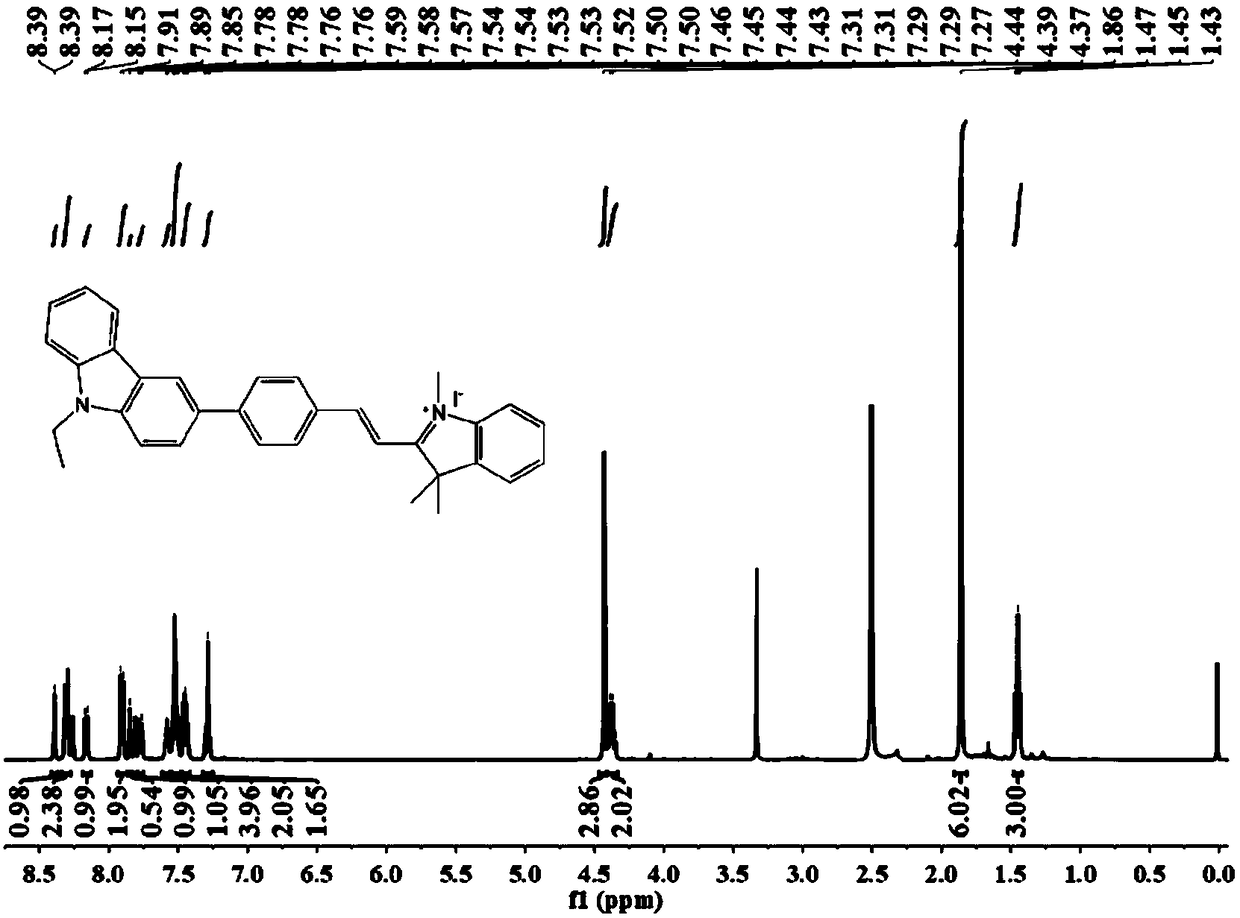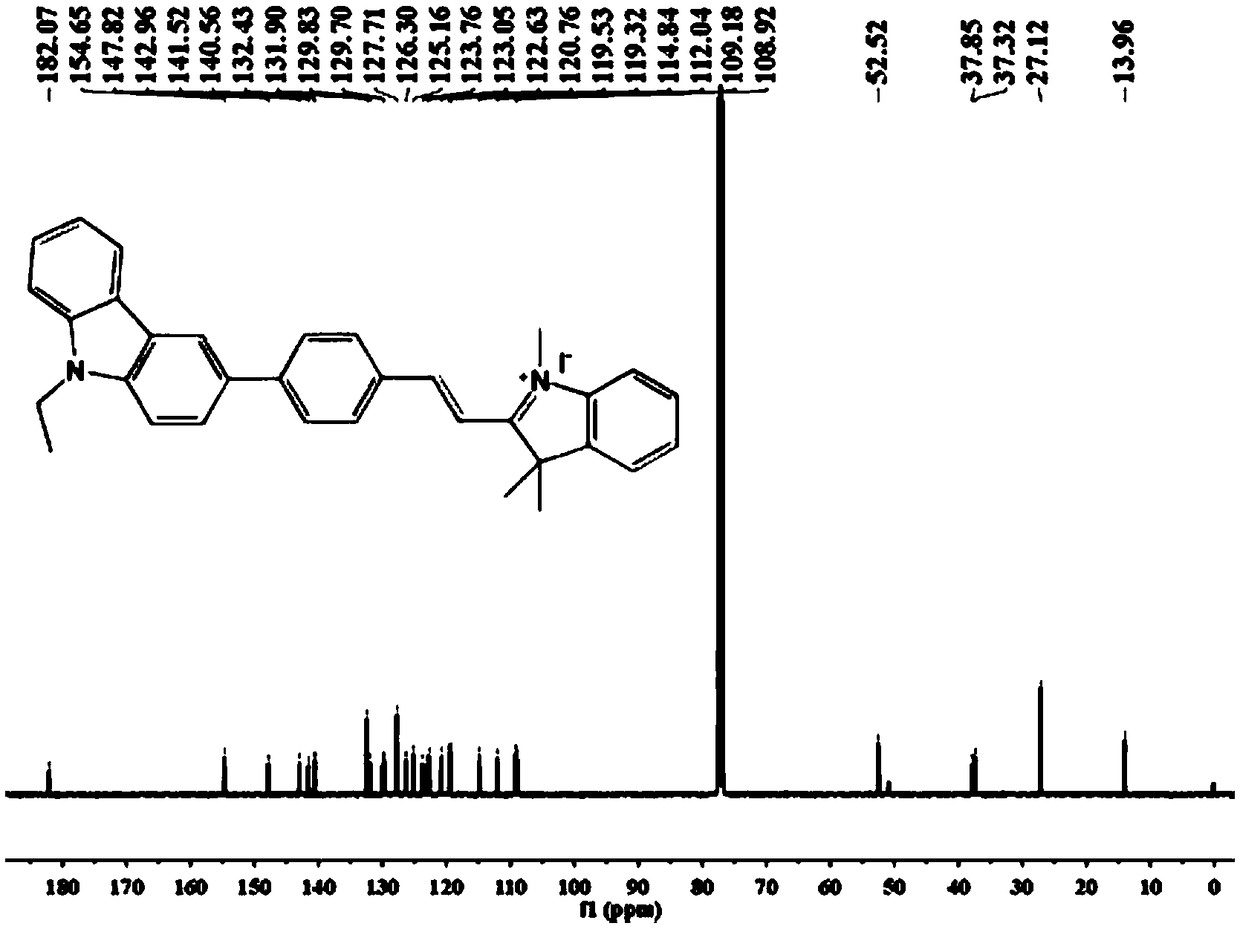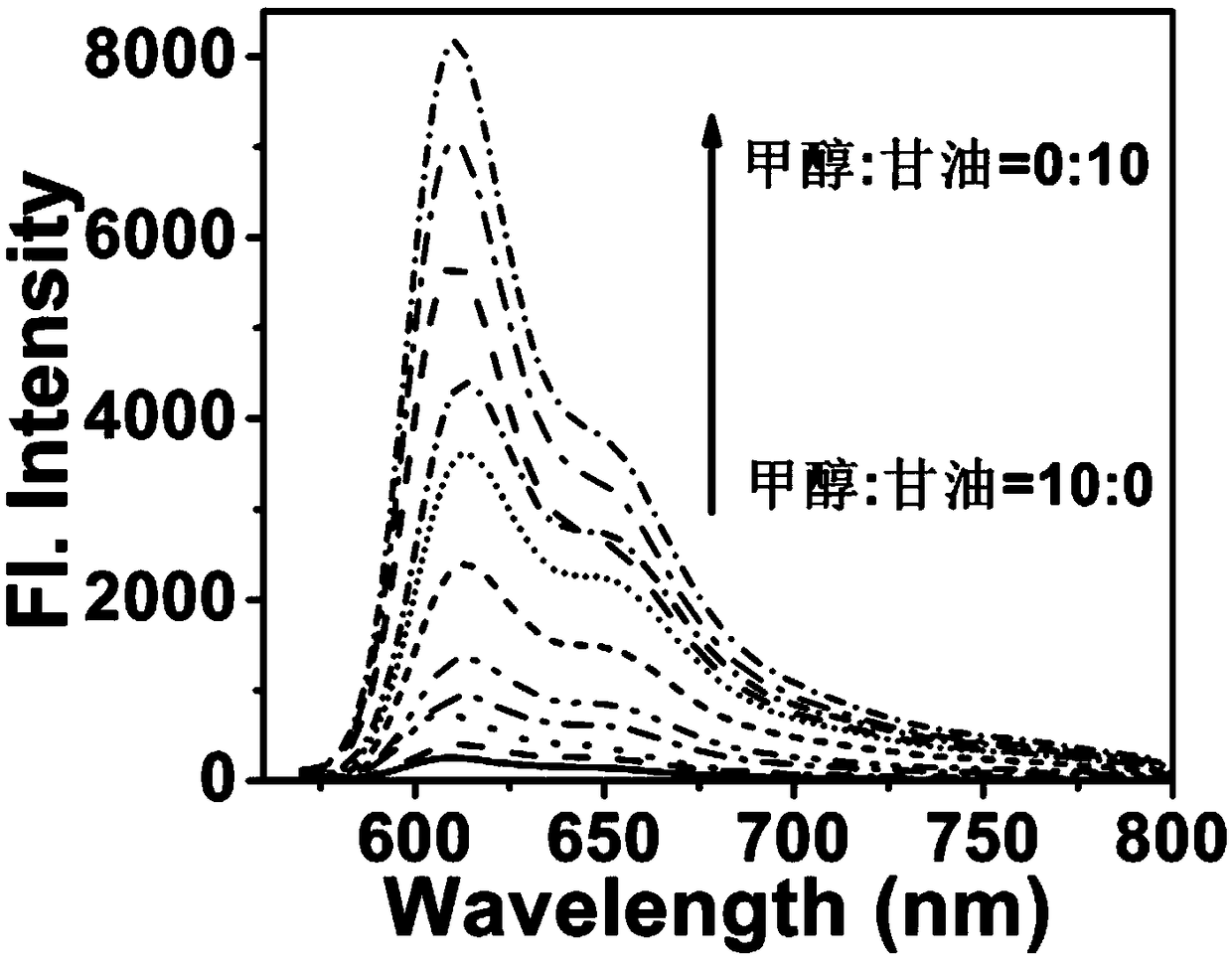Two-photon fluorescent probe for detecting viscosity of positioning mitochondria and synthesizing method and application thereof
A fluorescent probe and synthesis method technology, applied in the field of organic small molecule fluorescent probes, can solve the problems of biological material damage, short excitation wavelength, etc., and achieve the effects of simple steps, convenient purification, and high yield
- Summary
- Abstract
- Description
- Claims
- Application Information
AI Technical Summary
Problems solved by technology
Method used
Image
Examples
Embodiment 1
[0038] Example 1 Synthesis of Fluorescent Probes
[0039] (1) Synthesis of compound 3-(4-formylphenyl)-9-ethylcarbazole (3):
[0040] ;
[0041] Weigh 0.274 g 3-bromo-9-ethylcarbazole (1) (1 mmol), 0.18 g 4-formylphenylboronic acid (2) (1.2 mmol), 37 mg tetrakis-(triphenylphosphine)palladium ( 0.03 mmol), 0.445 g of potassium carbonate (3.23 mmol) was reacted in a mixed solvent of tetrahydrofuran and water = 3:1 (V:V), heated to 60 °C and refluxed, under N 2 After reacting for 12 h under atmospheric conditions, extract with dichloromethane, and remove a small amount of water remaining in the system with anhydrous sodium sulfate, then carry out vacuum distillation, spin dry the solvent to obtain a crude product, and use ethyl acetate with a volume ratio of 1:20 The ester and petroleum ether were used as the mobile phase for column chromatography separation and purification to obtain 3-(4-formylphenyl)-9-ethylcarbazole (3).
[0042] (2) Synthesis of compound iodide 1,2,3,3-...
Embodiment 2
[0050] Example 2 Fluorescence spectra of fluorescent probe CBI-V in different viscosity systems
[0051] A test mother solution of dimethyl sulfoxide (DMSO) with a concentration of 1 mM fluorescent probe obtained in Example 1 was prepared for use.
[0052] In the test solution, take 3 ml of solvents with different ratios of glycerol and methanol (glycerol:methanol=0:10, 1:9, 2:8, 3:7, 4:6, 5:5, 6:4, 7: 3, 8:2, 9:1, 10:0), then add the probe mother solution (final concentration is 10 μM), carry out fluorescence scanning (excitation wavelength 520 nm, detection band 530-850 nm), measured in each system Relative fluorescence intensity, such as image 3 shown. Depend on image 3 It can be seen that with the increase of solvent viscosity, the relative fluorescence intensity becomes stronger.
Embodiment 3
[0053] Example 3 Colocalization imaging of fluorescent probes on mitochondria
[0054] A test mother solution of dimethyl sulfoxide (DMSO) with a concentration of 1 mM fluorescent probe obtained in Example 1 was prepared for use.
[0055] Seed an appropriate density of Hela cells into a sterilized 35 mm imaging dish in CO 2 Incubator (at 37°C, 5% CO 2 ), and after the cells adhered to the wall, add the nuclear dye DAPI, the viscosity fluorescent probe CBI-V and the commercial dye mitochondrial green to the cells at the same time, so that the final concentration of DAPI is 5 μM, and the final concentration of the viscosity fluorescent probe is 10 μM. μM, the final concentration of mitochondrial green is 5 μM. Half an hour later, discard the medium, wash the cells with PBS buffer three times, and then perform fluorescence imaging (excitation wavelength: 404 nm, blue channel: 425-475 nm; excitation wavelength: 488 nm, green channel: 500-550 nm; excitation Wavelength: 561 nm, r...
PUM
 Login to View More
Login to View More Abstract
Description
Claims
Application Information
 Login to View More
Login to View More - R&D
- Intellectual Property
- Life Sciences
- Materials
- Tech Scout
- Unparalleled Data Quality
- Higher Quality Content
- 60% Fewer Hallucinations
Browse by: Latest US Patents, China's latest patents, Technical Efficacy Thesaurus, Application Domain, Technology Topic, Popular Technical Reports.
© 2025 PatSnap. All rights reserved.Legal|Privacy policy|Modern Slavery Act Transparency Statement|Sitemap|About US| Contact US: help@patsnap.com



